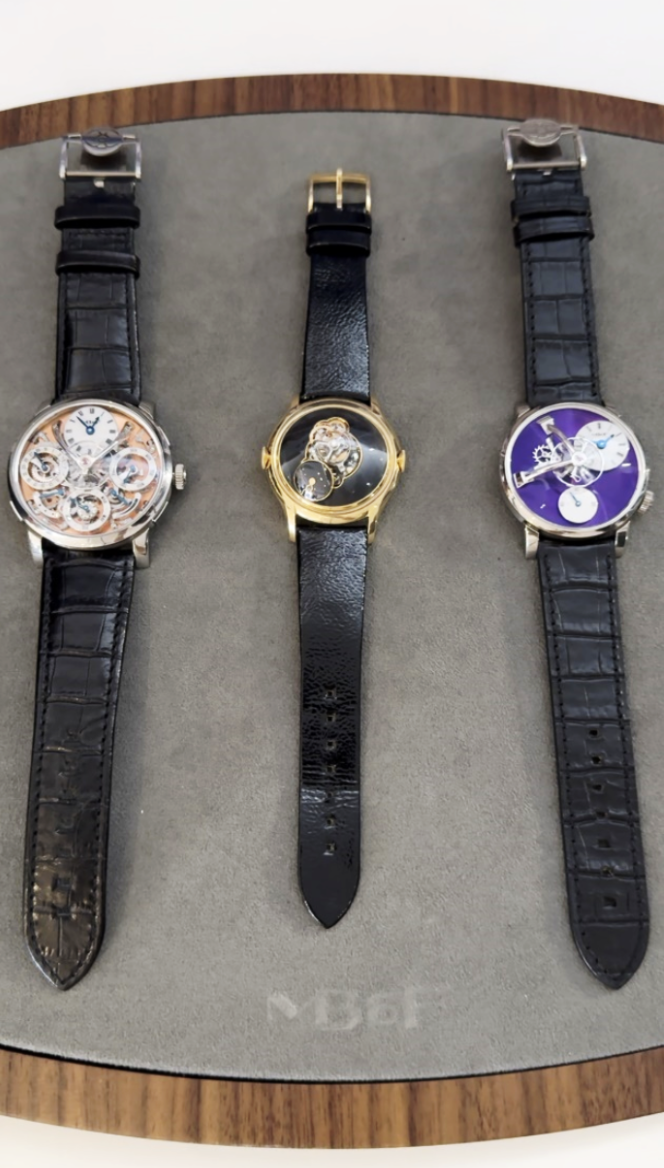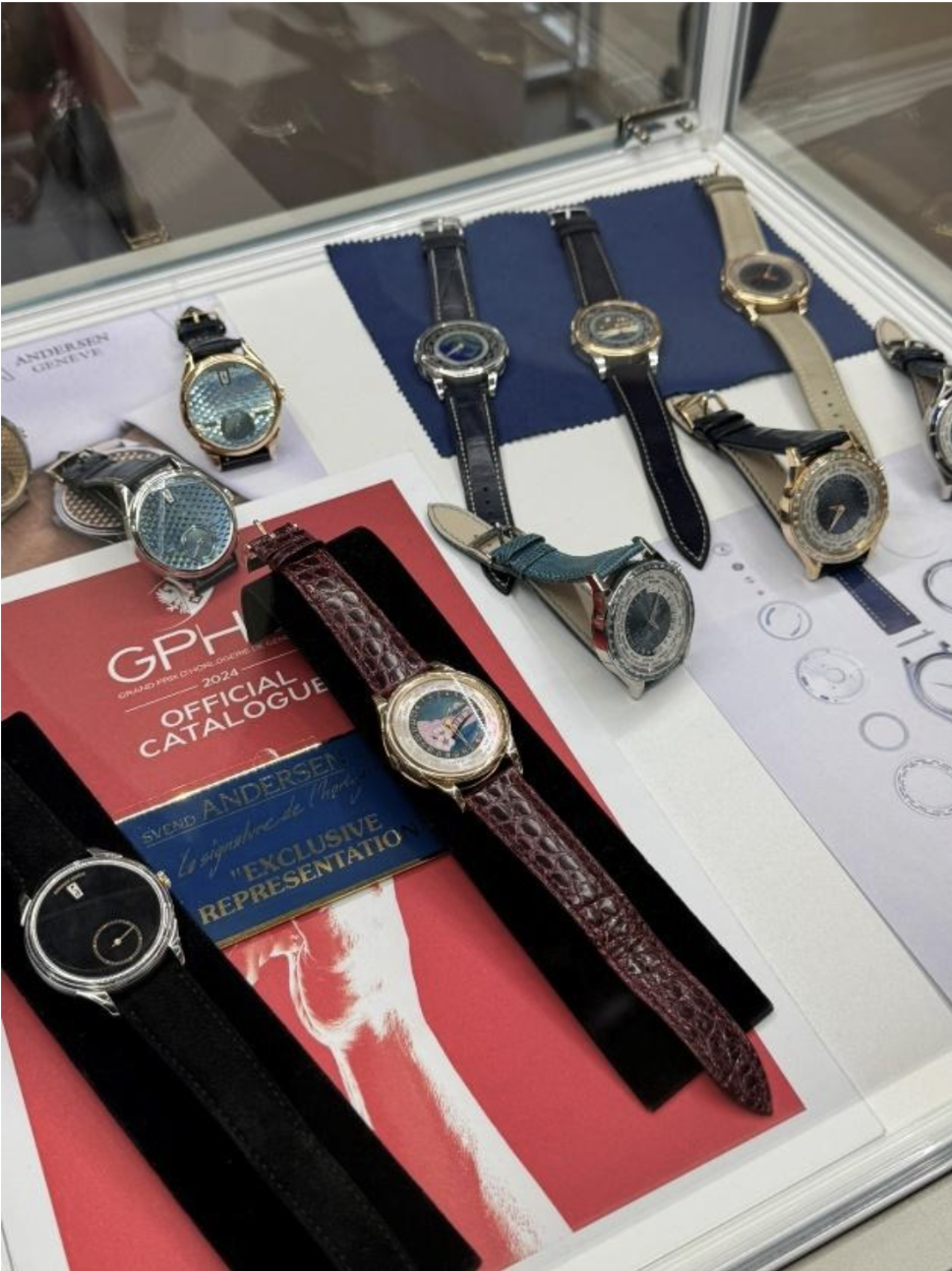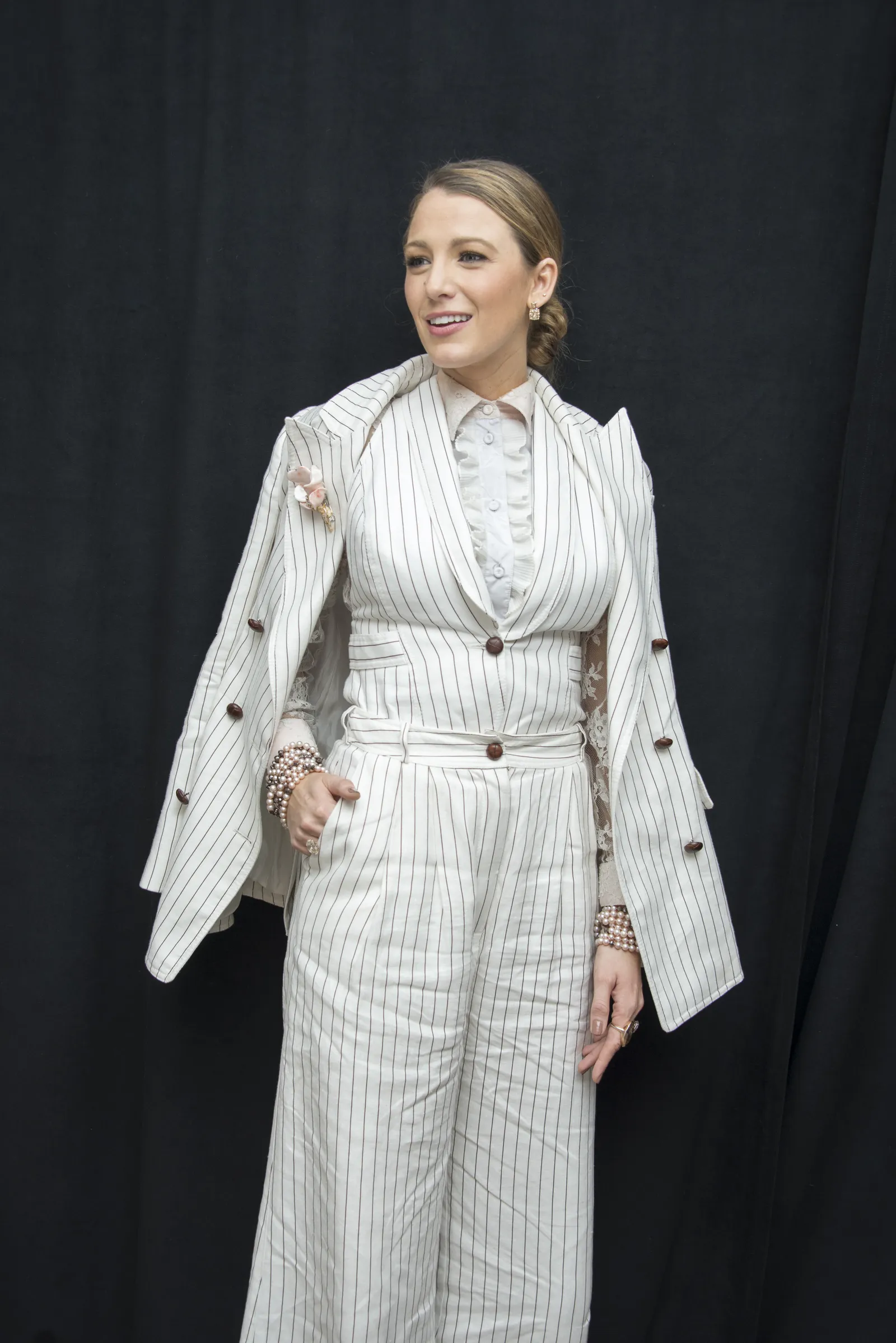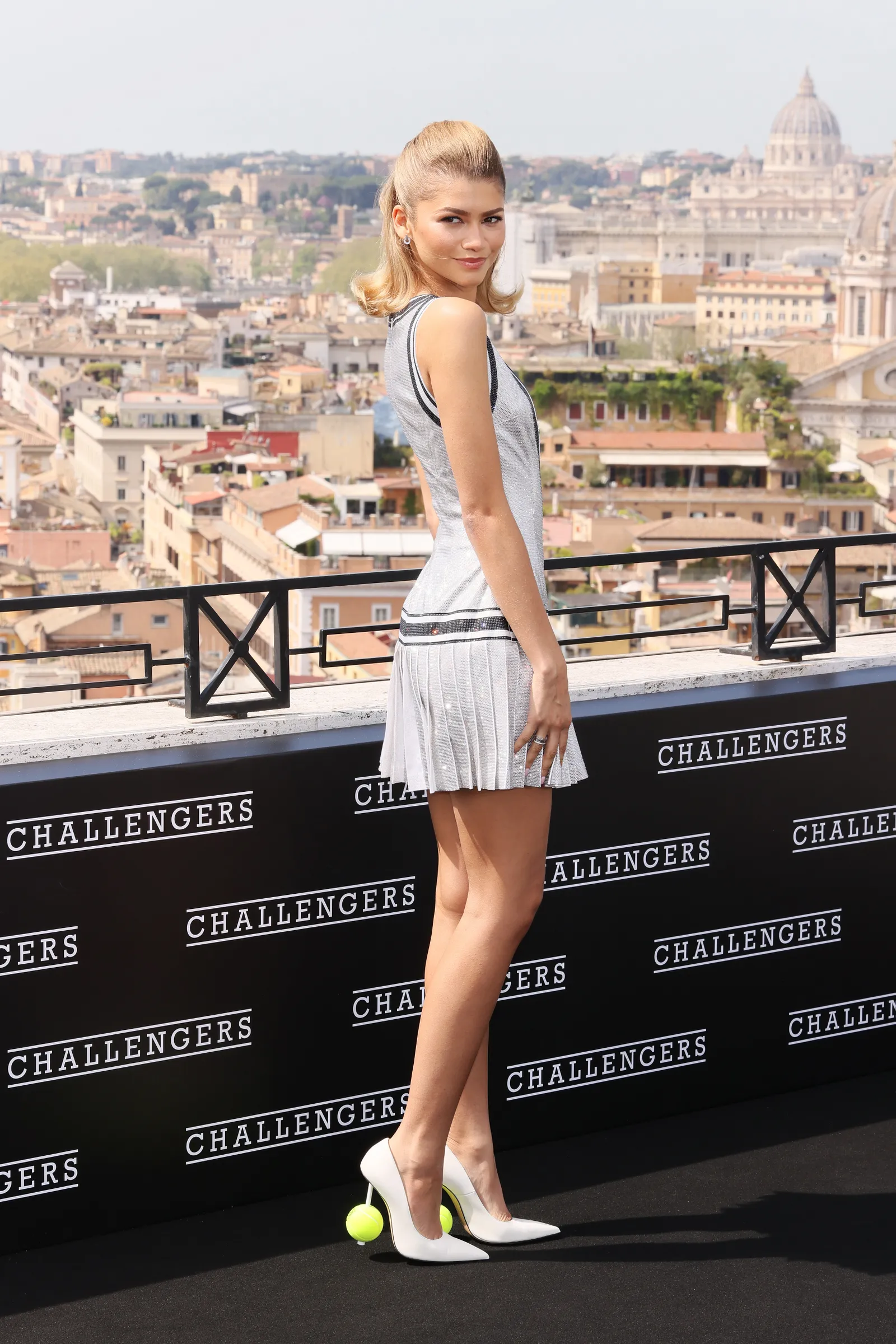It’s official! The first edition of Milano Watch Week is over. With over 3,000 visitors, the 21 participating watch brands welcomed enthusiasts and collectors from 31 different countries. Held at the prestigious Terrazza Martini in Milan, Milano Watch Week offered collectors and enthusiasts a unique opportunity to engage with the highly exclusive world of timepieces while enjoying the breathtaking view of Italy’s fashion capital.
When the elevator doors opened on the 15th floor, I was instantly struck by excitement seeing all these prestigious independent brands gathered in one place. It is a very rare treat, so I tried to make the best out of it. Thanks to the excellent organization, every collector and enthusiast could personally handle and even try on these pieces. Here are the three brands and timepieces that stood out to me during the fair.
MB&F
Maximilian Büsser’s journey into high-end independent watchmaking began in the late 1990s, when he was the General Manager at Harry Winston Timepieces. In 2005, he ventured out to establish his own brand, MB&F (Maximilian Büsser & Friends). The “friends” were experts from the Swiss watch industry whom he had worked with over the years, handpicked to collaborate on specific projects. Unlike the traditional secrecy of the watchmaking world, Büsser made sure to publicly credit these collaborators for their contributions. His vision was to bring innovation to every aspect of watchmaking. Starting with the watches themselves, he broke boundaries by experimenting with unconventional shapes, materials, and complications in ways no one had before.
In 2011, Büsser launched the Legacy Machines series, reimagining what MB&F might have created in the 19th century, the golden age of watchmaking. This was no small task, as it involved working within centuries of horological tradition while also incorporating modern innovation. The result was a striking blend of classic complications and aesthetics, combined with MB&F’s signature inventive flair.

On the left-hand side is the LM Perpetual, an innovative reimagining of the traditional perpetual calendar by Stephen McDonnell, designed with a fully integrated 581-component movement. Its standout feature is a visually stunning “suspended” balance wheel and open dial, which showcases the intricate mechanisms beneath.
In the middle is the LM FlyingT, a stunning creation designed specifically for women, featuring a bold, domed sapphire crystal and a captivating, vertically mounted flying tourbillon at its center. Its elegant design is enhanced by a subtle off-center dial positioned at 7 o’clock, while the case and movement showcase MB&F’s signature avant-garde aesthetics and mechanical excellence.
Finally, on the right-hand side, one of my favourite watches of all time, the LM101. With a stunning purple baseplate, this timepiece is a tribute to classic horology with a modern, avant-garde approach, featuring a large, suspended balance wheel at the centre of the dial that draws immediate attention. A key highlight of the LM101 is the movement, which was designed in collaboration with legendary independent watchmaker Kari Voutilainen, renowned for his mastery of traditional finishing techniques.
L’Épée 1839
Located in Delémont, in the heart of the Swiss Jura, L’Épée 1839 has been carrying forward its remarkable watchmaking tradition for 185 years, with all its creations designed, developed, and produced in-house. Now specializing in clocks, the company is renowned for its unmatched craftsmanship and distinctive creative vision, seamlessly blending form and function.
Each clock is a true technical achievement, featuring complex horological elements such as perpetual calendars, tourbillons, and retrograde hands. L’Épée 1839’s signature feature is its impressive power reserves, lasting up to 8,760 hours (a full year), alongside its unique designs that often carry a poetic or whimsical touch. Every mechanical and aesthetic detail serves as both a functional timepiece and an artistic masterpiece, showcasing the brand’s superior expertise.

To mark its 185th anniversary, L’Épée 1839 introduced the T35, paying homage to the Bugatti Type 35, considered one of the greatest race cars of all time. subtly showcases the hours and minutes along the side of its sleek chassis, combining sophisticated design with playful functionality. The miniature driver, seated in the cockpit beneath a glass dome, draws attention to the escapement while adding a charming, artistic touch to this imaginative timepiece. One of the T35’s most unique features is the functional handbrake on the side of the chassis. When pulled, it activates the engine and reveals a hidden lighter, blending craftsmanship with a fun, unexpected twist. This inventive fusion of technical expertise and creativity makes the T35 more than just a clock, it’s a truly engaging work of art.
Andersen Genève
Svend Andersen, born in Denmark in 1942, embarked on his horological journey after earning his watchmaking credentials in Denmark. In 1963, he moved to Switzerland to deepen his expertise, starting his career at Gübelin Lucerne’s after-sales service.
In 1969, Andersen gained widespread recognition with the creation of his unique Bottle Clock, which was showcased at the “Montres et Bijoux” exhibition. This inventive timepiece caught the attention of many, including Patek Philippe, who soon brought him on board to work in their prestigious Atelier des Grandes Complications. After nine years crafting intricate complications for the famous brand, Andersen set out on his own as an independent watchmaker.

At the bottom left, two of his watches have been entered into the prestigious GPHG (Grand Prix d’Horlogerie de Genève), a yearly reward promoting the world’s most remarkable creations.
The one on the left is the Jumping Hours Black Jade Stone, a sophisticated timepiece that combines the rare “jumping hours” complication with a striking black jade stone dial. The deep, rich hue of the jade adds elegance, and its unique natural veining ensures each dial is one of a kind. Housed in a polished case, the watch showcases Andersen Genève’s mastery of blending luxury materials with intricate horological craftsmanship, making it both a visually stunning and mechanically refined creation.
The one on the right is the Celestial Voyager Sakura, made in collaboration with Benjamin Chee Haute Horlogerie (BCHH). It is a stunning world-time watch that blends technical sophistication with exquisite artistry. Its dial features a delicate enamel depiction of cherry blossoms while offering a world-time function, allowing the wearer to track multiple time zones, showcasing Andersen’s expertise in complex complications. The inspiration taken from Patek Phillipe’s World Time is evident, yet Andersen has infused the Celestial Voyager Sakura with its own unique artistry and craftsmanship.
This event was far more than just a showcase of timepieces, it was a celebration of craftsmanship, innovation, and the shared passion that drives both watchmakers and collectors. Each display offered a glimpse into the creativity and technical mastery behind these extraordinary creations, drawing people from across the world. The excitement among attendees and reactions to the incredible timepieces were clear signs of Milano Watch Week’s success. As this exhilarating and emotional first edition comes to a close, all that remains is the anticipation for the next Milano Watch Week, where I hope to see even more brands, creativity, and unforgettable experiences!











